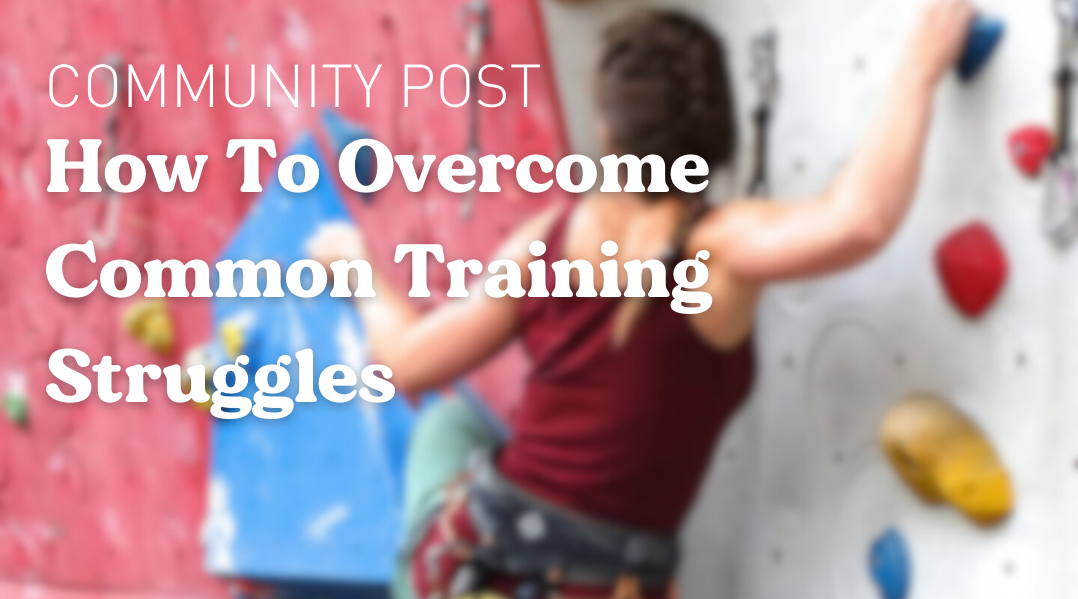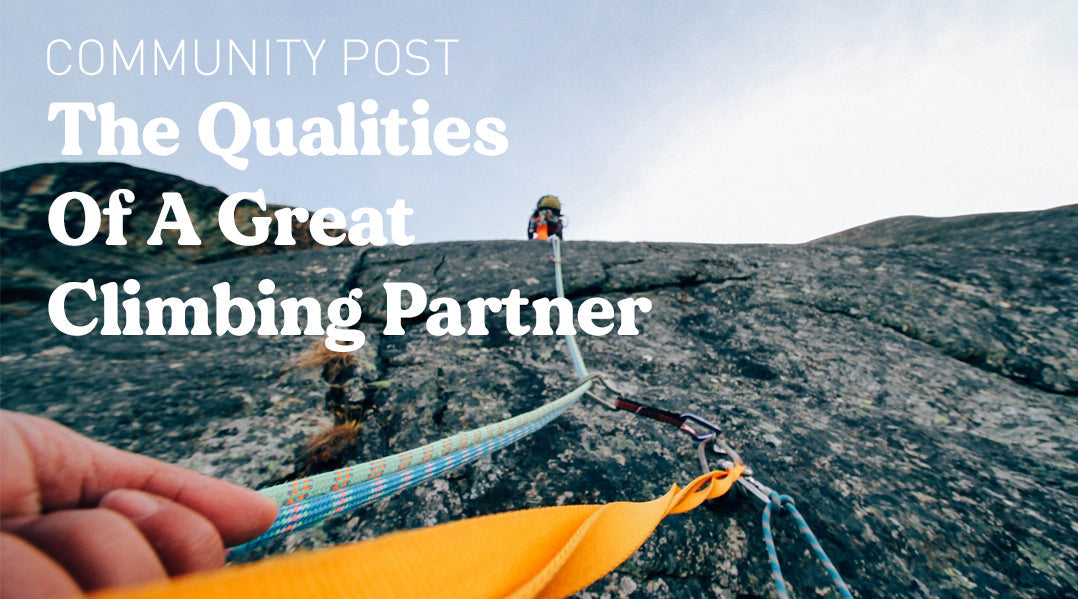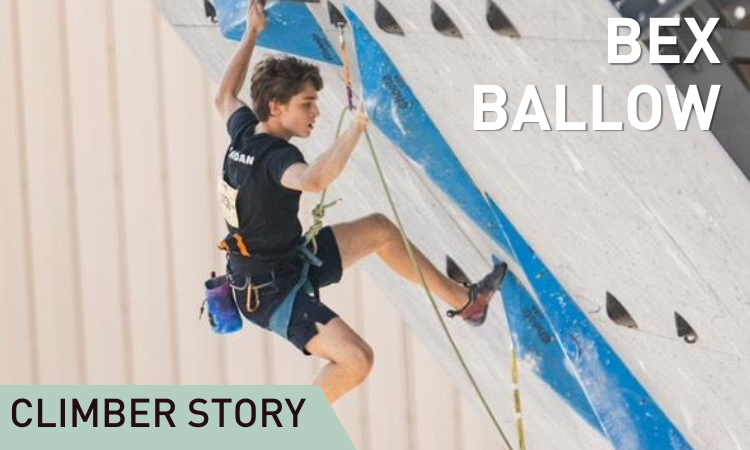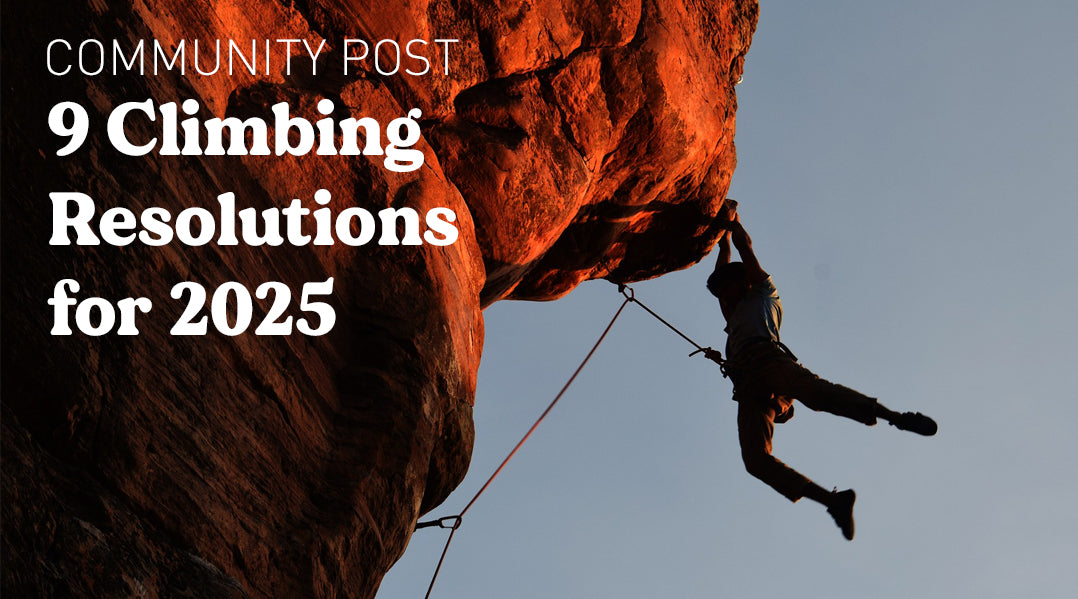Your Cart is Empty
DYNAMITE STARFISH'S ONLINE STORE IS CLOSED AS OF DEC 1, 2026. ask your local gear shop or climbing gym if they stock our products.
DYNAMITE STARFISH'S ONLINE STORE IS CLOSED AS OF DEC 1, 2026. ask your local gear shop or climbing gym if they stock our products.
The Climbing Training Struggles You Can’t Ignore (And How to Overcome Them)
March 19, 2025 6 min read

Training for climbing can be tough!
It’s painful, progress feels slow, and at times, it can even get pretty dull. If you’ve ever felt this way, you’re definitely not alone!
We recently asked the Dynamite Starfish community to open up about their biggest training struggles.
Keep reading to hear what these climbers had to say and get our tips on how to tackle each challenge!
Sore fingers!
I don't know about you folks, but I'm not in my 20s anymore (I'm 34...yikes!). With the passing years, I've become wiser, stronger, and more strategic. I've also learned that my fingers need more TLC than they did 10 years ago.
A tough training day on the hangboard or Kilter/Moonboard is going to leave my digits feeling thrashed for at least 48 hours. Here are a few tips you can try if you experience something similar.
1.) Don't be afraid to take a 'less is more' approach. End your board climbing session while you still feel fresh. Avoid the temptation to push for max weight PR on every hang on the hangboard.
2.) If you want to climb two days in a row, alternate climbing styles and grip types. For example, on day one you do crimpy climbs or hangboarding. The next day do open hand grips on more generous holds.
3.) You may need 72 hours (two rest days) between hard sessions to fully recover. Listen and learn how your body works. You can also experiment with one finger intensive session per week to see how you respond!

(Photo and quote from @carolenabird)
Not getting injured from overtraining
Ugh, we wish this wasn't so relatable...
We're all about getting Stoked here at Dynamite Starfish, but when it comes to training there really is a thing as too much stoke.
Unlike a sudden fall or awkward move, injuries that result from overtraining tend to manifest more slowly. Common culprits include adding too much weight when hangboarding or doing other strength exercises.
Pain creeps in a few weeks into your training cycle, but you decide it's no biggie. That is....until something gives out from accumulated fatigue!
Our number one piece of advice here — go slower than you think especially at the start of a training cycle. Play the long game. You can always increase intensity in the next session.
(Quote from @peridotcolibri and @michelle.b_ventures)
Sticking to the plan when needed
Let's imagine you've been hitting the rock gym on Tuesdays, Thursdays, and Saturdays for 2 years. You hired a climbing coach who wrote a killer 10-week plan, but on week 4 you find yourself veering off and trying those rad new slab climbs on the comp wall!
If just following the plan is your biggest struggle, try this:
Talk about your training plan out loud to yourself and your climbing partners. Get juicy with the details. The more you put it out there, the easier it is to hold yourself accountable.
You can also use an app like Google Calendars to schedule notifications to appear on your phone during the day. Seeing things written down before arriving to the gym helps your mind prepare to try, try, try, and send!

(Quote from @jacar.climbs photo credit @eric_fallecker)
Climbing for fun VS doing the things you need to train
Whoa whoa whoa...who said that training for climbing can't be fun?!
We put together a round-up of games that you can sprinkle into your climbing sessions at the rock gym. Many of these activities can be done with a climber friend or modified to do alone. Find it on our blog here.

(Photo and quote from @yokochi1)
Keeping motivated...it's kinda boring!
Not going to lie, it is pretty hard to romanticize an hour-long hangboarding session in the dark corner of the gym...
You might already be using a notebook or note-taking app (at least you should be) to track your training progress, but perhaps your goal-setting could use fine-tuning.
Here, we're not talking about long-term goals like "I want to climb V# by X day". We're talking about short-term, micro-goals like "Last session I did three sets of 8 pull-ups. Today I want to try set one with 10 lbs."
After completing your session, you write in your notebook "I was only able to do 6/8 pull-ups on set one with 10 lbs. Next session let's shoot for 7/8 reps!"
Looking for a more grade-oriented approach? Draw yourself a bouldering/route grade pyramid in your notebook and fill in the triangles as you tick off climbs. Try hard and have fun!
(Photo and quote from @wal.lrat)
It's hard to train with friends and it gets lonely :(
Training with friends can be challenging, especially when schedules or interests don’t align, but it’s important to remember that you’re not alone in feeling this way.
Try speaking to staff at your local gym, check for a gym bulletin board, or reach out to online communities for a training buddy. We know it's difficult to find a climbing partner with the exact same level, but you can still complete your individual workouts in the same area of the gym while sharing chats and checking in during rest periods.
And if all else fails, throw in some headphones and jam out to our community playlist on Spotify!

(Photo and quote from @climbing_sunshine)
Learning when to train and when to recover
There's not a one-size-fits-all answer to this. Every climber and body is different. Some climbers may be able to climb 5 days per week, whereas others will implode with more than 3.
As a rule of thumb, take 2-3 rest days from climbing per week with at least 1 day per week being a complete rest (aka...no hiking 14ers on your day off 😉).
For finger-intensive training cycles, stagger sessions to leave 48-72 hours rest (1-2 full days) between sessions. On climbing trips, know that your performance will most likely drop drastically after two or three days of climbing. A rest day will do wonders for your power....and skin!
And if you ever find yourself feeling super fatigued, take a day off. Your body will love you tomorrow ❤️

(Quote from @lkasmer photo credit @westy.fitzsimmons)
Pushing past my perceived boundaries
Finding boundaries in your climbing training involves walking a thin line between what you are capable of and over-doing it. It's hard. It's scary. It's venturing into the unknown.
Exploring your limits doesn't — and shouldn't — happen in one giant leap. It’s about gradually building trust in your abilities and learning to embrace discomfort.
Over time, as you begin to try for one extra rep, hang with a little bit of extra weight, climb one more boulder, you'll begin to see that your boundaries are more flexible than you thought. Climb On!
(Photo and quote from @climbingboomski)
Finding balance while training for other sports
Enter that cliché quote "Jack of all trades, master of none."
We've definitely heard many climbing coaches argue that sports like running may be detrimental to climbing performance. While there's certainly some validity to this — from a perspective of time management at the very least — it comes with a major caveat.
First, it's important to do some honest introspection. Does doing a variety of activities give you a sense of fulfillment? Would you feel empty if you removed one of your sports from your normal routine? Are you OK knowing that your progress may be slower because you dedicate time to many different things?
If you answer YES, then follow your happiness and keep the Good Climbs, Good Vibes rolling. If you answer NO, then perhaps it's time to explore a change.
And that quote from above? It has a second part.
"But often better than a master of one."
(Quote from @ironwilliams)
Endurance!
An endurance session after time off from this type of training is AWFUL — talk about painful pump burn.But there is some good news!
Unlike pure strength, endurance is easier and faster to improve. If you can Keep Climbing through those first few unenjoyable sessions, you'll usually start to notice gains within just a few weeks.
For boulderers, 4 x 4's are a classic. For lead climbers, pick a route that you can comfortably flash without needing excessive rests while climbing. Climb the route, lower down, and immediately begin again. Repeat 2-4 times aiming to fall off from pump on your last rep. Then take 15-20 minutes rest and repeat the entire cycle.

(Quote from @ashley_momo)
How about you? What's your biggest struggle when training for climbing? Do you have advice for fellow climbers?
Share your thoughts in the comments below. We'd love to hear from you!
Psst…Our tees are a great conversation starter!
With so many styles, we know you’ll be the climber having the most fun at the crag.
SHOP OUR UNISEX CLIMBING APPAREL:
Leave a comment
Comments will be approved before showing up.
Also in News

Building Trust and Teamwork: Qualities of a Great Climbing Partner
February 12, 2025 4 min read
Read More Recent Articles
- The Climbing Training Struggles You Can’t Ignore (And How to Overcome Them) March 19, 2025
- Building Trust and Teamwork: Qualities of a Great Climbing Partner February 12, 2025
- Climber Story: Bex Ballow January 29, 2025
- 9 Climbing Resolutions for 2025 December 31, 2024
- Climber Story: Kanani Kalahiki December 11, 2024
- 12 Awesome Gift Ideas for Climbers in 2024 November 20, 2024
- Climber Story: Nick Ranelli November 06, 2024
- If climbing was a scary movie, this would be the title... October 30, 2024
- Climber Story: Britney Berkstresser October 02, 2024
- The best (and worst) names for climbing routes we've ever seen September 25, 2024
Subscribe
Sign up to get the latest on sales, new releases and more …
want 15% off?
Get a welcome gift when you sign up with us!




